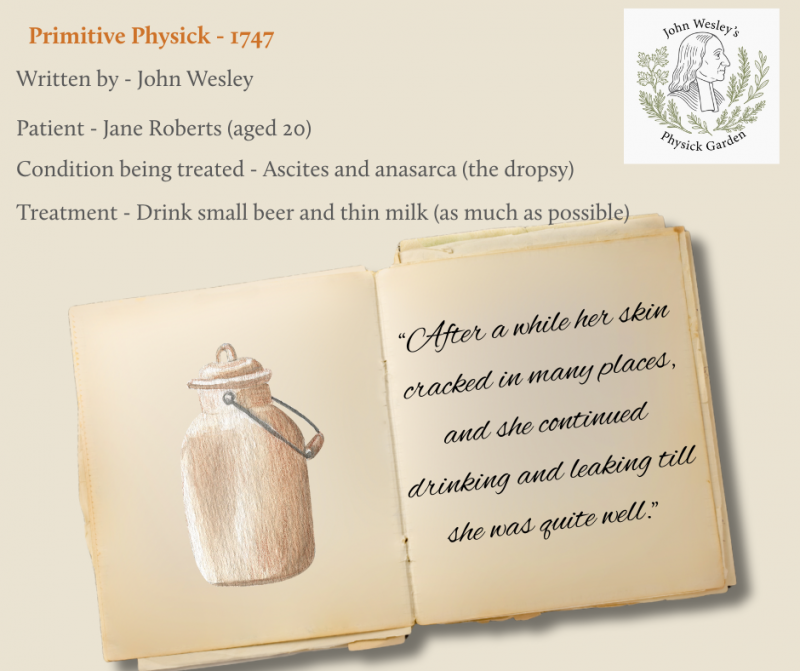The numbers listed under each plant are the number of the remedy as it appears in the 1780 edition of Primitive Physick.
Rue (Ruta graveolens)
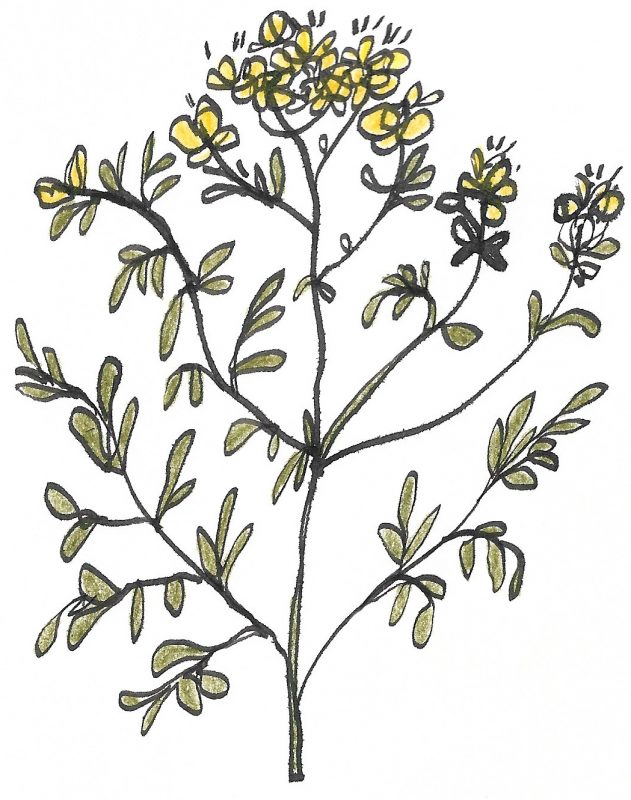 Rue has a long history of medicinal use and was historically used to ward off evil and protect against witchcraft. In the ancient Roman world, the naturalists Pedanius Dioscorides and Pliny the Elder recommended that rue be combined with the poisonous shrub oleander to be drunk as an antidote to venomous snake bites. It is also known to be TOXIC and should be used with caution.
Rue has a long history of medicinal use and was historically used to ward off evil and protect against witchcraft. In the ancient Roman world, the naturalists Pedanius Dioscorides and Pliny the Elder recommended that rue be combined with the poisonous shrub oleander to be drunk as an antidote to venomous snake bites. It is also known to be TOXIC and should be used with caution.
Wesley’s recommendations:
91 – Lachrymal Fistula – This disorder in the inner corner of the eye causes tears to flow involuntarily – Apply a poultice of fine leaves of rue.
111 – A Worm Fever – Boil a handful of rue and wormwood in water: foment the belly with the decoction, and apply the boiled herbs as a poultice; repeat the application night and morning. This frequently brings away worms in children who will take no internal medicine, and is likewise serviceable if the fever is of the putrid kind.
216 – Sting of a Wasp – Rub the part with bruised leaves of house leek, water-cresses or rue.
266 – A malignant ulcer – Foment morning and evening with a decoction of mint; then sprinkle on finely powdered rue.
282 – Worms – Boil half an ounce of aloes, with a few sprigs of rue, wormwood, and camomile, in half a pint of gall, to the consistency of a plaister; spread this on thin leather and apply it to the stomach, changing it every twelve hours., for three days; then take fifteen grains of jalap, and it will bring vast quantities of worms away, some burst and some alive: This will cure when no internal medicine avails. (See extract from Dr. Tissot, page 145).
Samuel Auguste André David Tissot (1728 – 1797) was a notable 18th-century Swiss physician, who’s most famous work in his lifetime was ‘Avis au peuple sur sa santé’ (1761), arguably the greatest medical best-seller of the 18th century. On 1 April 1787, Napoleon Bonaparte wrote to Dr. Tissot complimenting him on spending his “days in treating humanity” noting that his “reputation has reached even into the mountains of Corsica” and describing “the respect I have for your works…”
Other therapies
When combined with sugar, it is traditionally used to soothe eye discomfort and alleviate the symptoms of a mild cold. Additionally, inhaling rue is thought to mitigate the effects of shock. Exposure to common rue, or herbal preparations derived from it, can cause severe burn-like blisters on the skin.
Wormwood (Artemisia absinthium)
Legend has it that when the serpent slithered out of Eden, wormwood first sprang from the impressions left in the ground by its tail. It is one of the bitterest known herbs, but has also been a major ingredient in herb wines and aperitifs. Both absinthe and vermouth get their names from this plant. Wormwood was hung at the door, where it prevented night time visits by goblins, and kept away evil spirits. It was also used in ink to stop mice eating old letters. Wormwood was a strewing herb to prevent fleas. It is thought to be the herb that Shakespeare had in mind when Oberon lifted the spell from Titania with “the juice of Dian’s bud”.
Wesley’s recommendations:
90 – Eyes or eyelids inflamed– Apply wormwood tops with the yolk of an egg
111 – Worm fever (see rue)
232 – A fresh surfeit – Take about the size of a nutmeg of the green tops of wormwood
282 – Worms (see rue)
Other therapies
The tops of the plant are used medicinally. Wormwood can be used to release bowel gasses. It stimulates digestion and remedies digestive problems.
White Hellebore (Veratrum album)
White hellebore, is a false hellebore and is a TOXIC plant that has traditionally been used in homeopathic medicine. The name Hellebore is Greek in origin and came to be used for any plant thought to cure madness. In 1400 BC a Greek shepherd called Melampus discovered its use in treating nervous tension after noticing its effect on goats. One of its early uses was to expel lice.
Wesley’s recommendations:
141- The Itch – Mix powder of white hellebore with cream for three days. Anoint the joints for three mornings and evenings, it seldom fails.
This distemper is nothing but a kind of very small lice, which burrow under the skin: therefore inward medicine are absolutely needless. Is it possible that any physician should be ignorant of this? – JOHN WESLEY
Other therapies
White hellebore was historically used to treat various ailments, including gout, cholera, and high blood pressure. It was also sometimes applied topically for herpes outbreaks.
John Wesley also recommends white hellebore to treat ‘an apoplexy’ (7) which he describes as a total loss of all sense and voluntary motion, commonly attended with a strong pulse, hard breathing and snorting. For this he recommends a powder of white hellebore blown up the nose. The herb is not used today due to its toxicity.
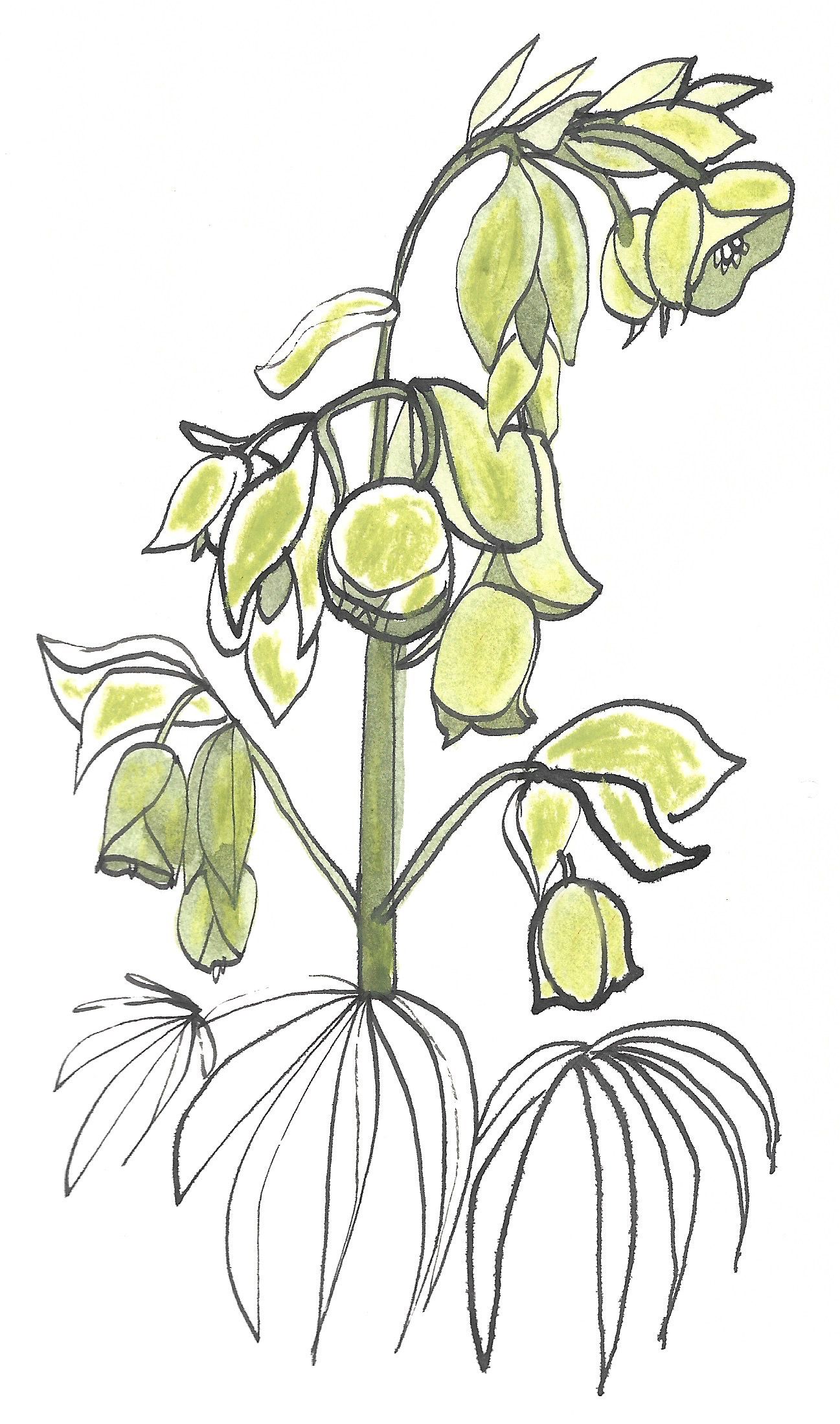 *Stinking Hellebore (Helleborus foetidus)
*Stinking Hellebore (Helleborus foetidus)
Along with other hellebores, the Stinking Hellebore has been traditionally used as something of a cure all – for anxiety and psychic disorders, for reducing blood pressure and hypertension, as a heart stimulant, and as a purgative and diuretic.
A dropsy is a preternatural collection of water in the head, breast, belly, or all over the body. It is attended with a continual thirst. The part swelled pits if you press it with your fingers. The urine is pale and little – JOHN WESLEY
Pellitory-of-the-Wall (Parietaria judaica)
Pellitory-of-the-wall is frequently found growing out of cracks in old walls and pavements, on cliffs and banks, and in hedges. It can often be found around old ruins and castles, as well as on damp church walls. Clusters of tiny flowers appear from June to October. It is a foodplant for the caterpillars of the Red Admiral butterfly.
74 – The Dropsy – Mix a pound of the coarsest sugar with a pint of juice of pellitory of the wall, bruised in a marble mortar. Boil it as long as any scum rises. When cool, bottle and cork it. If very bad take three spoonfuls at night and two in the morning. It seldom fails – tried.
Other therapies
Pellitory-of-the-wall was an important plant in herbal medicine, being used to treat bladder and kidney stones because of its own association with stone.
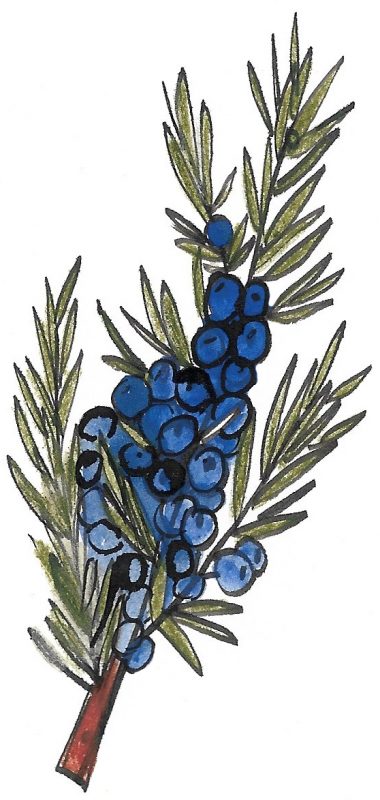 Juniper (Juniperus communis)
Juniper (Juniperus communis)
Juniper was first used by Greek physicians to treat snakebites and protect against the plague. The Dutch name for juniper is jenever, which in time became “Geneva” and finally, the English word “gin”.
Wesley’s recommendations:
74 – The Dropsy – An infusion of roasted Juniper berries roasted and made into a liquor like coffee
Other therapies
Juniper has cleansing, toning and astringent properties; it is a diuretic so is helpful in detoxing the body of harmful waste products. It also clears the mind of confusion and exhaustion.
Delphinium / Larkspur (Consolida)
Larkspur, also known as Delphinium, has a complex relationship with medicine. While some species have been historically used for medicinal purposes, for conditions like lice infestations, dropsy, and colic, it is crucial to understand that larkspur is not considered safe for medicinal use today due to its high toxicity. It is not specifically mentioned in Primitive Physick but fits within this range of plants and the remedies they provide.
The botanical name Delphinium is derived from the Latin word for dolphin, because the buds resemble this aquatic mammal to some extent. The flower has backward-pointing parts that resemble spurs. That explains the common name ‘larkspur’.
Butcher’s Broom (Ruscus aculeatus)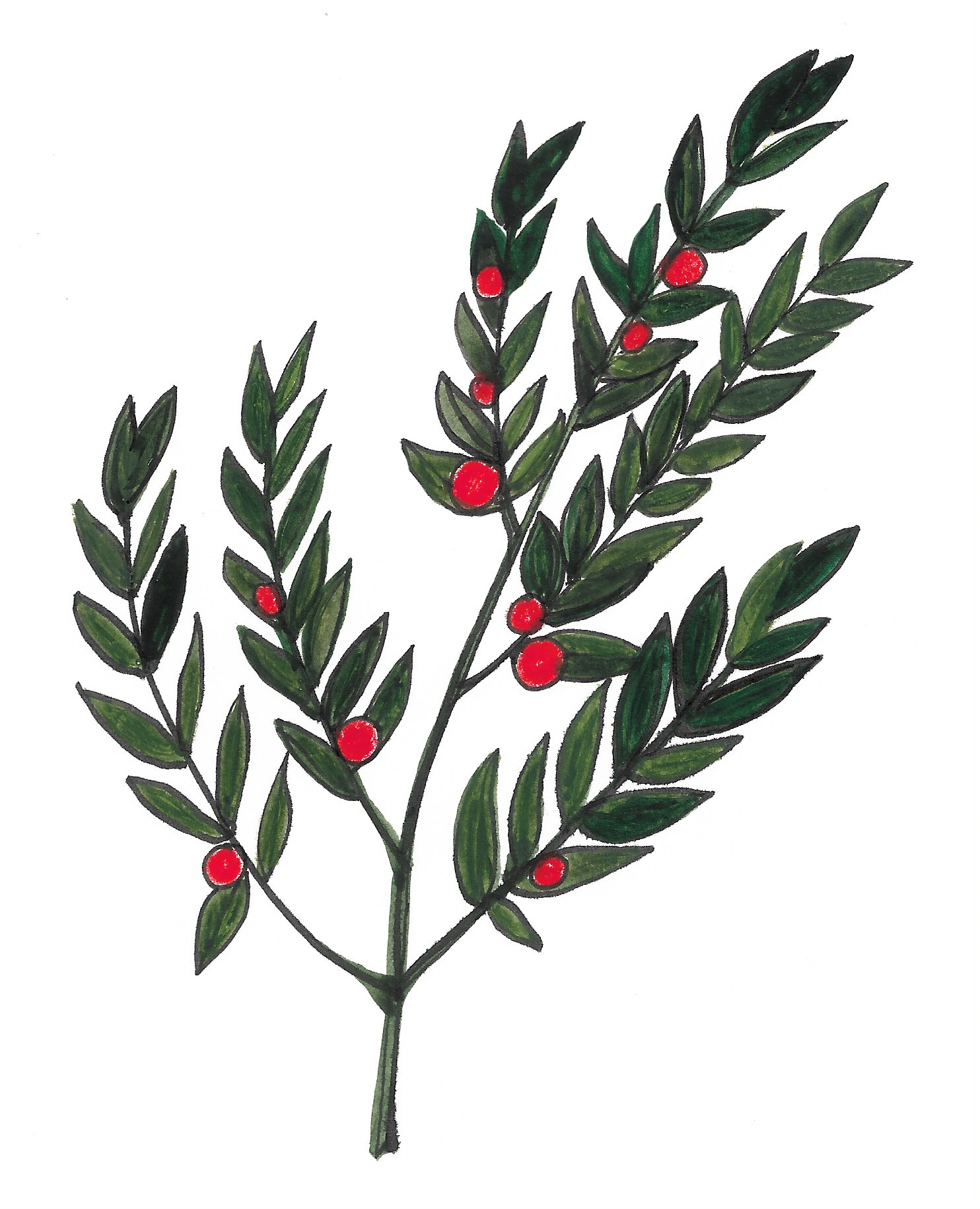
Butcher’s broom is a native of Europe, North Turkey, North Africa and the Azores. The plant contains saponins and was traditionally used for cleaning out butchers’ shops, hence the name. This practice led to the plant becoming rare in the wild. The fruit are ornamental and could be TOXIC if eaten
Wesley’s recommendations:
74 – The Dropsy – Half a pint of decoction of butcher’s broom (intermixing purges twice or thrice a-week)
Other therapies
Its root are prized in herbal medicine because they contain various active compounds, including flavonoids and many others. These compounds may be why butcher’s broom is linked to several potential health benefits, such as improved blood circulation and hemorrhoid treatment. Research indicates that butcher’s broom significantly reduces tension and swelling around the lower legs and ankles in adults with chronic venous insufficiency.
Chamomile (Chamaemelum nobile)
Chamomile is an herb that belongs to the Asteraceae (daisy or sunflower) plant family and is grown around the world. It has been used as a traditional medicine for thousands of years to calm anxiety and settle stomachs. People in ancient Rome, Greece, and Egypt used dried chamomile flowers and their essential oils as a medicinal herb.
Wesley’s recommendations:
20 – Sore and swelled breasts – Boil a handful of camomile and as much mallows in milk and water. Forment with it between two flannels, as hot as can be borne, every twelve hours. It also dissolves any knot or swelling in any part.
Other therapies
Chamomile contains compounds that can help reduce inflammation by inhibiting the production of inflammatory chemicals like prostaglandins, leukotrienes, and histamines, which are released in response to injury or irritation.
For the Quinsy – draw in as hot as you can bear, for ten or twelve minutes, together, the fumes of red rose leaves, or camomile flowers, boiled in water and vinegar, or of a decoction of bruised hemp seed – JOHN WESLEY
Foxglove (Digitalis purpurea)
There are a number of names connected with foxgloves, fairy caps, fairy thimbles, fairy’s gloves, gloves of Our Lady and many more. Digitalis was the name given to the plant in the 16th century and means a thimble, referring to the shape of the flowers. In 1785 an English doctor called William Withering, experimenting with old herbal recipes, discovered that the chemicals it contains could be used to treat heart conditions. He was rewarded by being made a Fellow of the Royal Society. Today patients still benefit from this discovery.
Wesley’s recommendations:
240 – To dissolve white or hard swellings – Take white roses, elder flowers, leaves of fox-gloves and of St John’s wort, a handful of each; mix with hog’s lard and make an ointment
Other therapies
All parts of the Foxglove are considered highly TOXIC. Despite this it was popularly used in country medicine in the late 18th century for sore throats, catarrh and as a compress for bruises and swelling. It was later developed as treatment for heart conditions.
St John’s-Wort (Hypericum perforatum)
Greek physicians like Hippocrates, Dioscorides, and Galen used St. John’s-wort for conditions like snakebites, menstrual disorders, and intestinal worms. During the medieval period it was believed to have magical properties, used to ward off evil spirits, demons, and diseases. It was hung over doorways, tucked under pillows, or worn as protection, later St John’s-wort continued to be used for various ailments, including wound healing, nervous disorders, and even as a treatment for insanity.
Wesley’s recommendations:
240 – To dissolve white or hard swellings (see Foxglove)
Other therapies
Today, St. John’s wort is most widely known for its potential to help with mild to moderate depression, though its effectiveness in treating severe depression is unclear. It’s also used for menopause symptoms, wound healing, and other conditions.
Roses (Rosa)
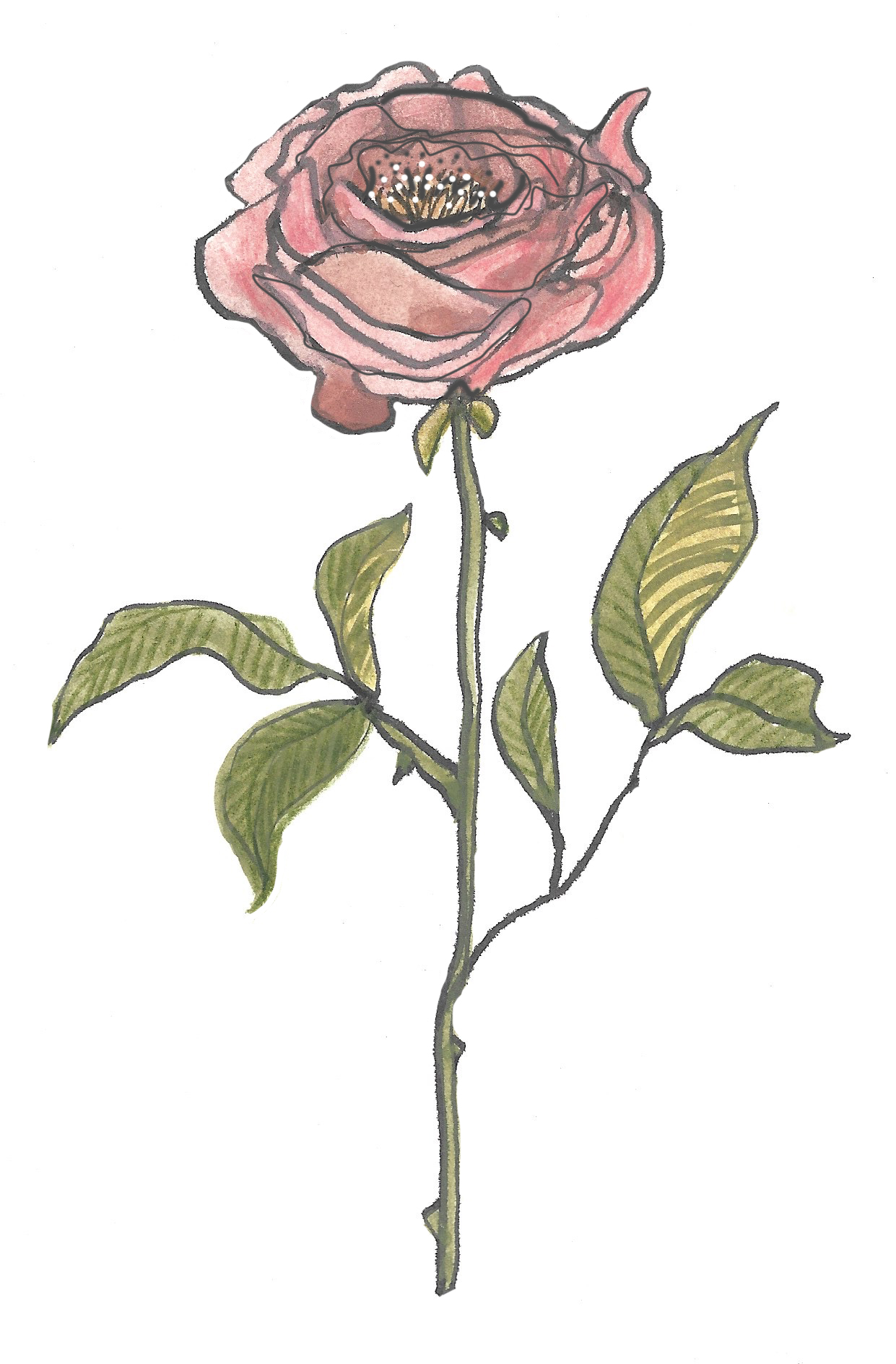 Roses have always symbolized love. The Greek poet Sappho called the rose “The Queen of Flowers”. The Romans strewed the floors of their villas with the fragrant petals and even made them into wreaths to wear at banquets, in the hope they would prevent them from getting drunk. They made a conserve with the petals, dusted themselves down with powdered petals and distilled the oil to anoint themselves with. They were used on feast days as a symbol of mirth and romance.
Roses have always symbolized love. The Greek poet Sappho called the rose “The Queen of Flowers”. The Romans strewed the floors of their villas with the fragrant petals and even made them into wreaths to wear at banquets, in the hope they would prevent them from getting drunk. They made a conserve with the petals, dusted themselves down with powdered petals and distilled the oil to anoint themselves with. They were used on feast days as a symbol of mirth and romance.
Wesley’s recommendations:
19 – Hard Breasts – Apply turnips roasted till soft, then mashed and mixed with a little oil of roses. Change this twice a day, keeping the breast very warm with flannel
84 – Bruise in the eye – Apply a plaster of conserve of roses
90 – Eyes or eyelids inflamed – Beat up the white of an egg with two spoonsful of white rose-water into a white froth. Apply this on a fine rag, changing it so that it may not grow dry till the eye or eye-lid is well.
92 – Pearl in the eye – Dissolve a little sal ammoniac in rose-water. Keep this three days in a copper vessel. Drop it twice a-day into the eye.
97 – Eye water – Stamp and strain ground-ivy, celandine, and daisies, an equal quantity: add a little rose water and loaf sugar. Drop a drop or two at a time in the eye, and it takes away all manner of inflammation, smarting, itching, spots, webs and any other disorder whatsoever, yea, though the sight were almost gone.
141 – The Itch – Beat together the juice of two or three lemons, with the same quantity of oil of roses. Anoint the parts affected. It cures in two or three times using.
240 – To dissolve white or hard swellings (see foxgloves)
263 – Ulcer in the gum or jaw – Apply honey of roses sharpened with spirits of vitriol.
Other therapies
Apothecary’s Rose (Rosa gallica): Historically significant, it’s been used for digestive issues, skin ailments, and inflammation. Damask Rose (Rosa damascena): Known for its strong fragrance and therapeutic properties, it’s used to treat abdominal and chest pains, menstrual bleeding, and digestive issues. Rugosa Rose (Rosa rugosa): Valued for its anti-inflammatory properties and high vitamin C content in the hips. Dog Rose (Rosa canina): A well-known source of vitamin C, especially its hips, and used in traditional medicine for various ailments. Nootka Rose (Rosa nutkana): Its petals and hips are used for boosting immunity and treating colds, while its roots and bark are used for sore throats and labor pain relief.
Stinging Nettle (Urtica dioica)
Stinging nettles have a long and rich history in medicine. Ancient Egyptians used stinging nettle to treat arthritis and lower back pain, while Roman troops rubbed it on themselves to help stay warm.
Wesley’s recommendations:
215 – Sting of a nettle – Rub the part with the juice of nettles.
239 – White swelling on the joints – Boiled nettled
282 – Worms – Two spoonsful of nettle juice
173 – Violent bleeding piles – Lightly boil the juice of nettles with a little sugar; take two ounces. It seldom needs repeating.
Other therapies
Stinging nettle’s leaves and root provide a wide variety of nutrients, including: Vitamins: Vitamins A, C and K, as well as several B vitamins. Minerals: Calcium, iron, magnesium, phosphorus, potassium and sodium. Fats: Linoleic acid, linolenic acid, palmitic acid, stearic acid and oleic acid. Amino acids: All of the essential amino acids. Polyphenols: Kaempferol, quercetin, caffeic acid, coumarins and other flavonoids. Pigments: Beta-carotene, lutein, luteoxanthin and other carotenoids.
For Worms – Syrup of bear’s-foot is made thus: Sprinkle the green leaves with vinegar, stamp and strain out the juice, and add to it a sufficient quantity of course sugar, This is the most powerful medicine for long round worms. Bruising the green leaves of bears-foot and smelling often at them, sometime expels worms. – JOHN WESLEY



